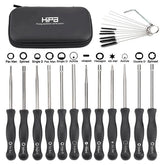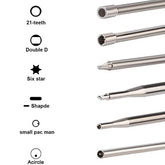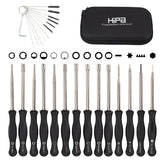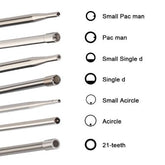Why Your Riding Mower Battery Won’t Charge (and How to Fix It)
Have you ever run into this situation-replacing the battery of the lawn mower but the new battery still won’t take a charge? A riding mower that won’t hold a charge is actually one of the most common frustrations for lawn owners. Have you thought that probably the problem isn’t the battery itself, but the charging system?

Although there’re lots of causes for the battery no charging issue, such as the voltage regulator problem, a broken alternator, loose or corroded wire etc.One small but important part that often gets overlooked is the fuse.
In this blog, we’ll dive in why your riding mower battery won’t charge and share step-by-step tips to diagnose and fix the issue.
Why Your Riding Mower Battery Won’t Charge
Your mower’s charging system has a simple but important job: keep the battery topped off while the engine runs. If the system isn’t working, the battery drains until it can no longer crank the engine.
One common reason the lawn mower battery won’t be charged is a blown fuse. The fuse is a safety device that protects the mower’s wiring from shorts or overloads. But when it blows, the alternator and regulator can’t send power back to the battery, leaving it dead after a few uses.
Symptoms of a Charging Problem
Before you assume your battery is bad, look for these signs:
- The riding mower dies after replacing the battery or shortly after charging.
- Headlights or accessories dim while the engine runs.
- A voltmeter shows less than 12 volts at the battery even after mowing.
- The battery voltage reading in the voltmeter shows almost no change before and after the engine starts
| 12.6-12.7 Volts |
A healthy, fully charged battery. |
|
12.4 - 12.5 volts |
Half charged, still usable but the charge is dipping. |
|
12.2 volts or lower |
Undercharged or possibly deteriorating; the battery needs to be recharged. |
These symptoms point to a charging issue—not necessarily a weak battery
How to Locate and Test the Fuse
Find the fuse – Most riding mowers have it in a small holder near the battery or wiring harness. Check your manual for the exact location.

Image Credit: Youtube Channel Taryl Fixes All
(Some lawn mower only get one fuse and some get 2 fues, one would start the engine and the other would make the battery get charged.)
Check visually – Pull the fuse out. If the metal strip inside is burnt or broken, the fuse is blown.
Test with a multimeter – A good fuse shows continuity; a blown one does not.
Replacing a Blown Fuse
Replace the fuse with one of the same amperage rating (usually 20A or 30A).
Never “upsize” to a higher fuse just to get the mower running—it can fry your wiring.
If the new fuse blows again quickly, there’s a deeper problem in the charging circuit.
Other Reasons a Lawn Mower Battery Won’t Be Charged
If the fuse is good but your riding mower battery is not charging, the issue could be one of these:
Voltage regulator/rectifier – Converts power to a form the battery can store.
Alternator/Stator – Generates electricity while the engine runs.

Image Credit: Youtube Channel Taryl Fixes All
The purple wire in this picture sends the voltage to the battery to charge.
Loose or corroded wiring – Poor connections prevent the battery from charging.
Weak or old battery – Sometimes, the charging system works fine but the battery simply won’t hold a charge.
When your riding mower battery is not charging, don’t rush to buy a new battery just yet. A simple blown fuse may be the cause, and it’s one of the cheapest fixes you can make.
Disclaimer:
Always prioritize safety. Disconnect the spark plug wire before performing any maintenance to prevent accidental starting. Refer to your owner’s manual for model-specific instructions.






















